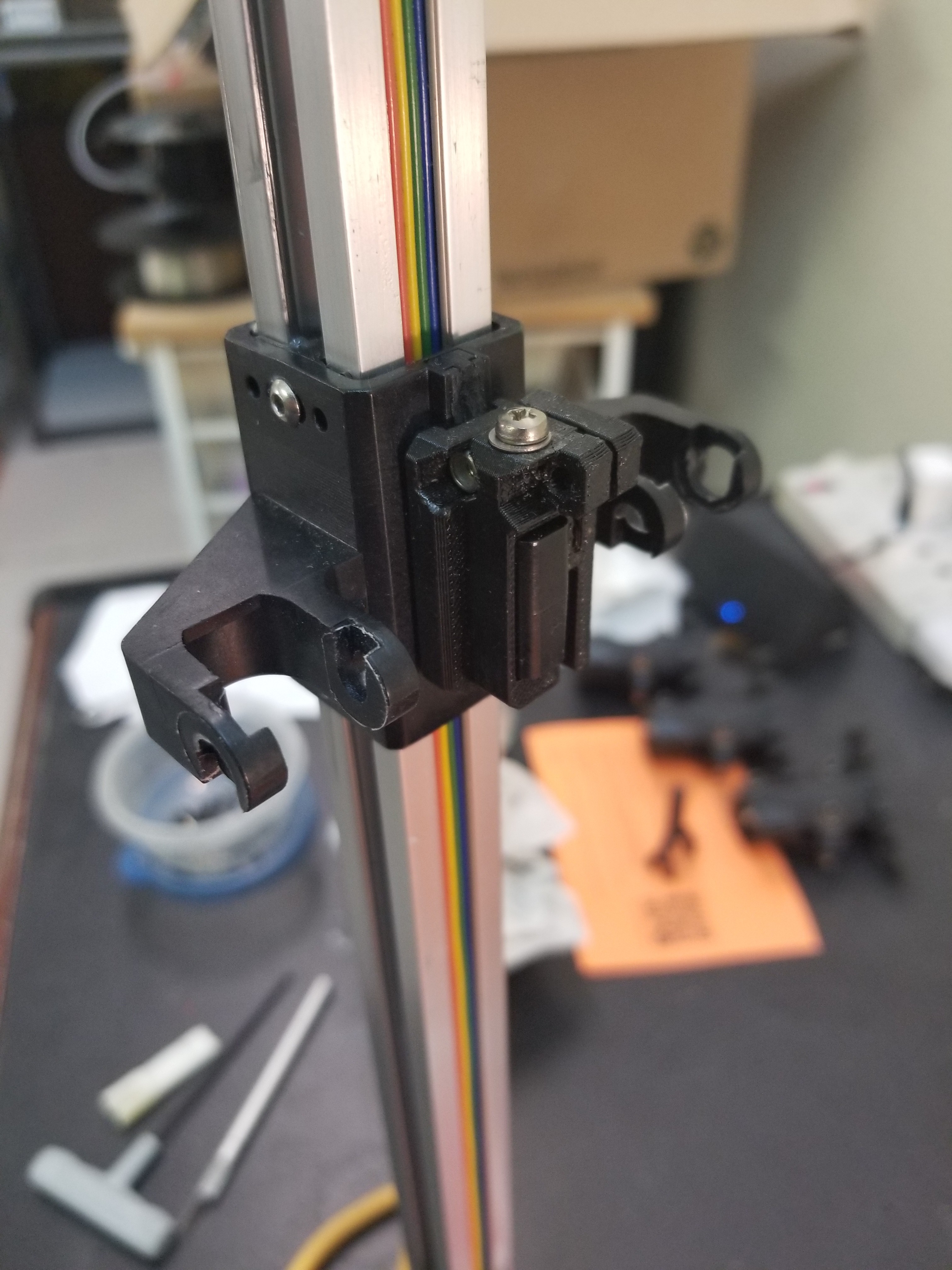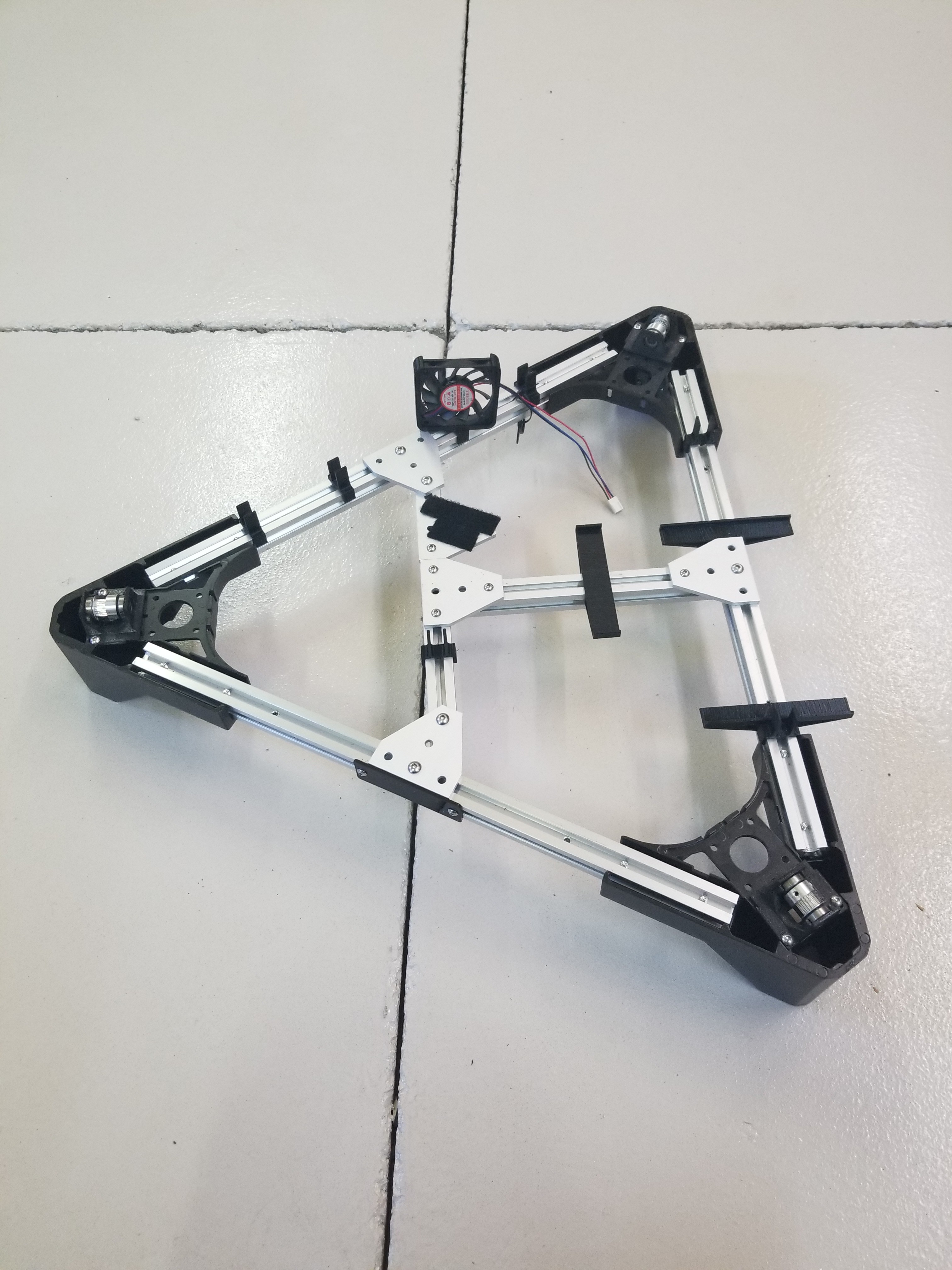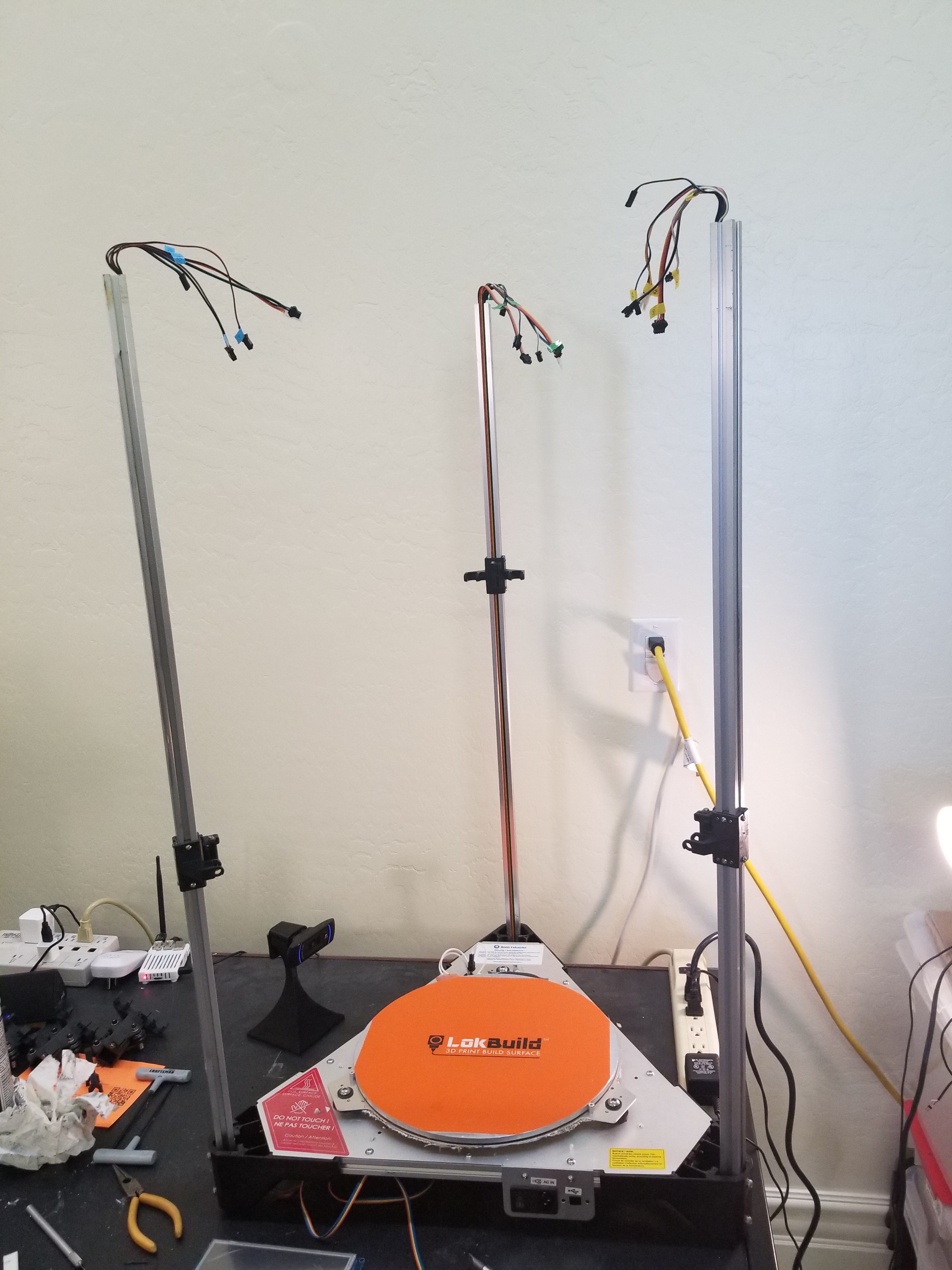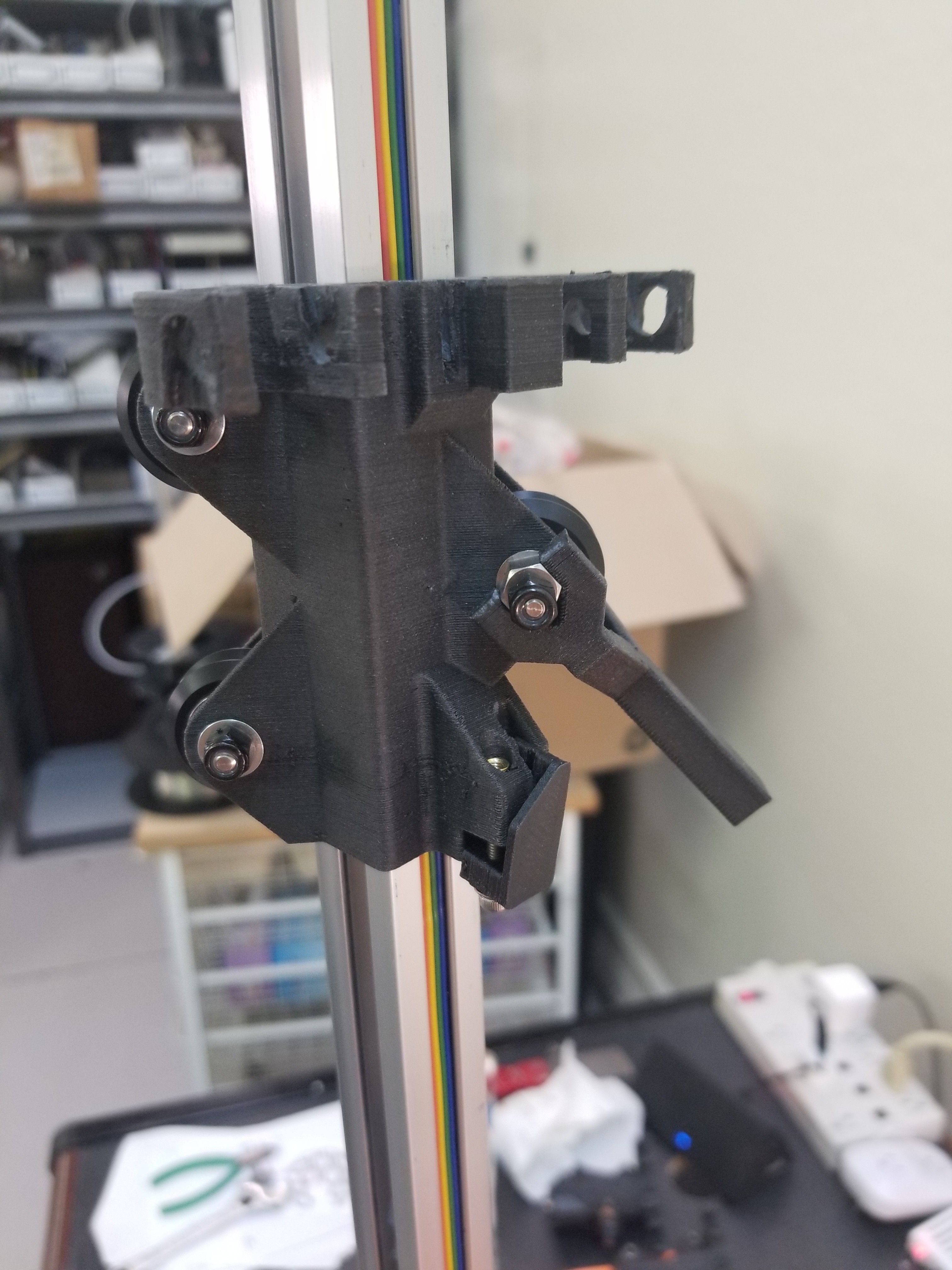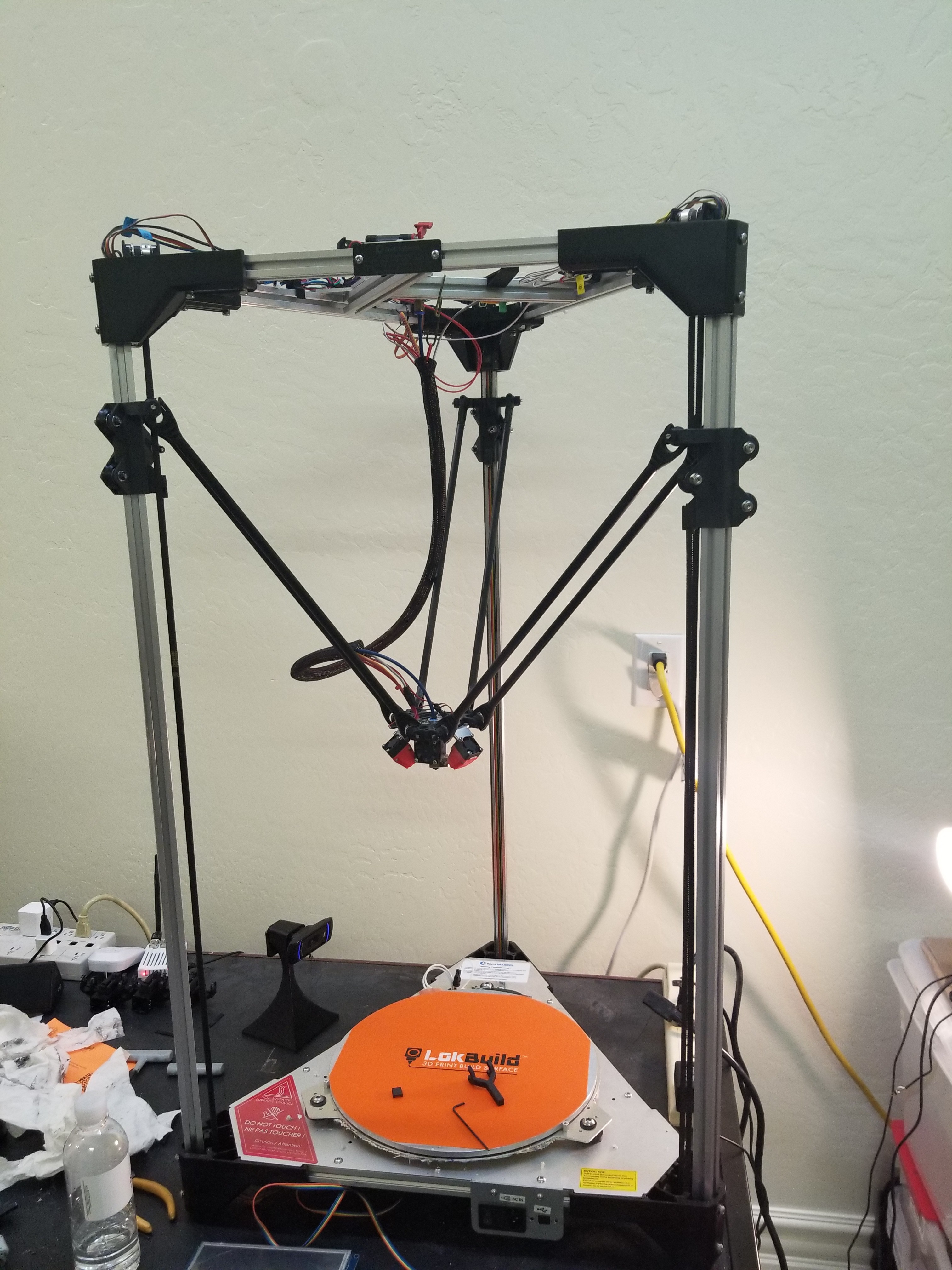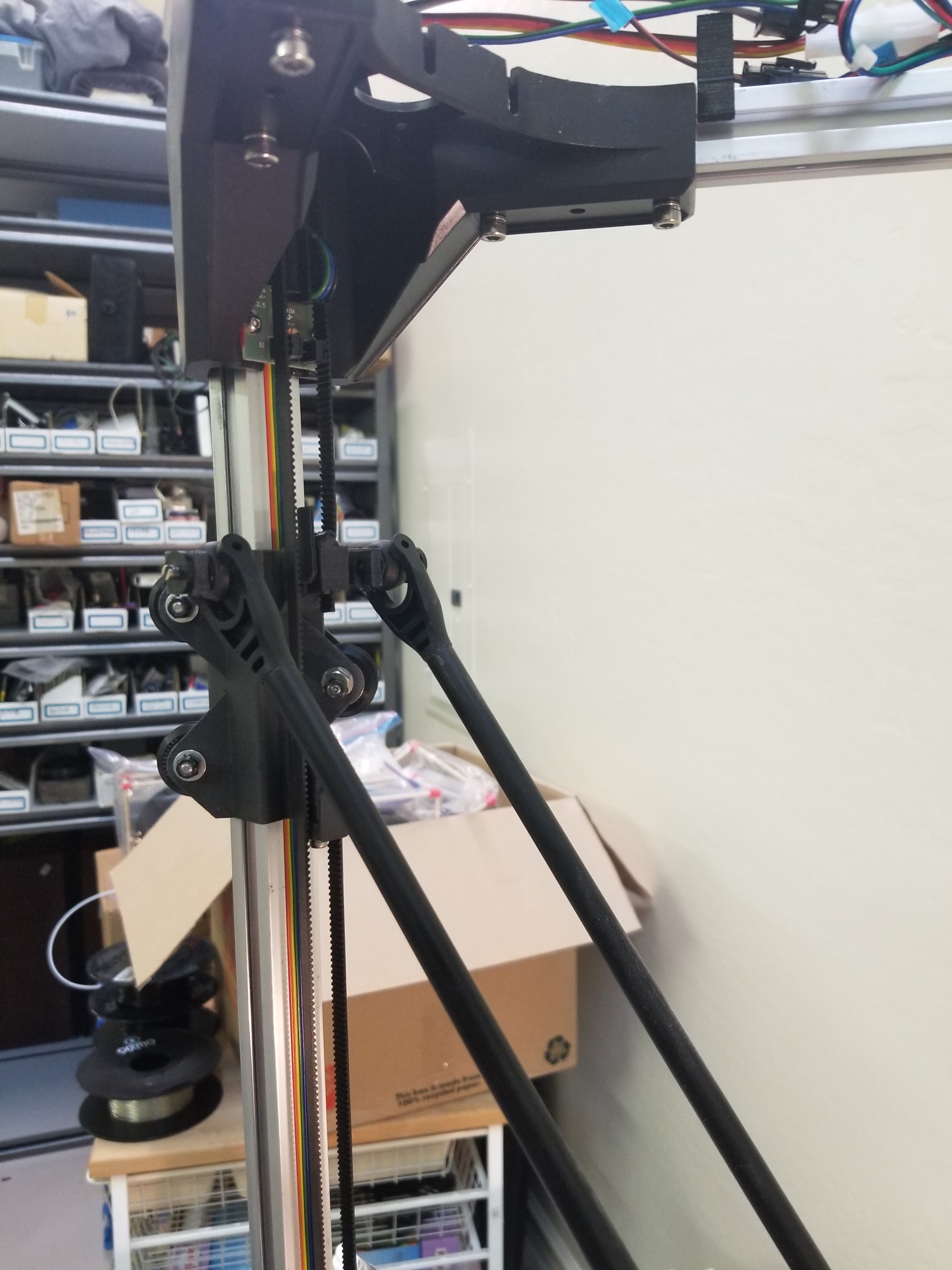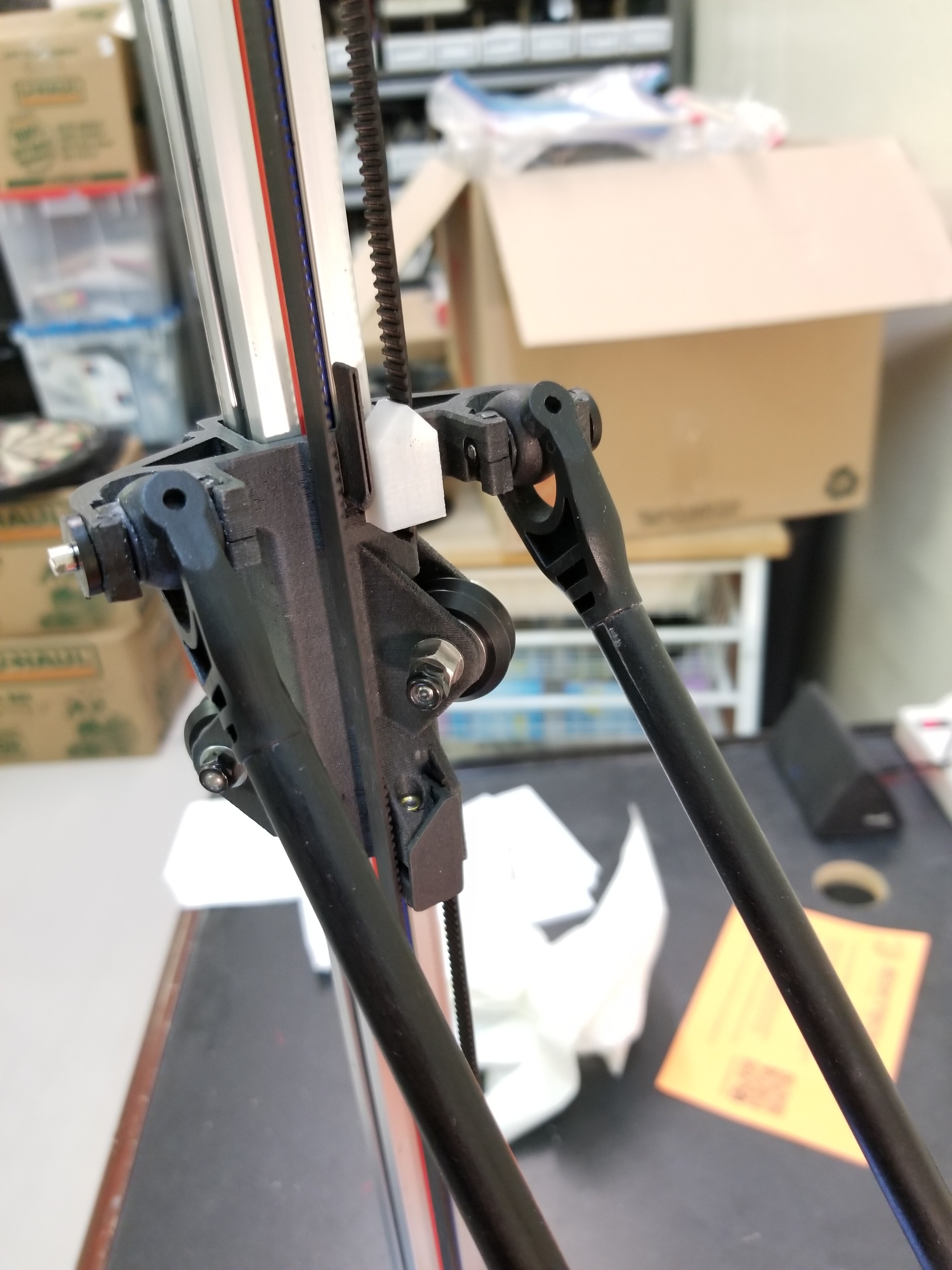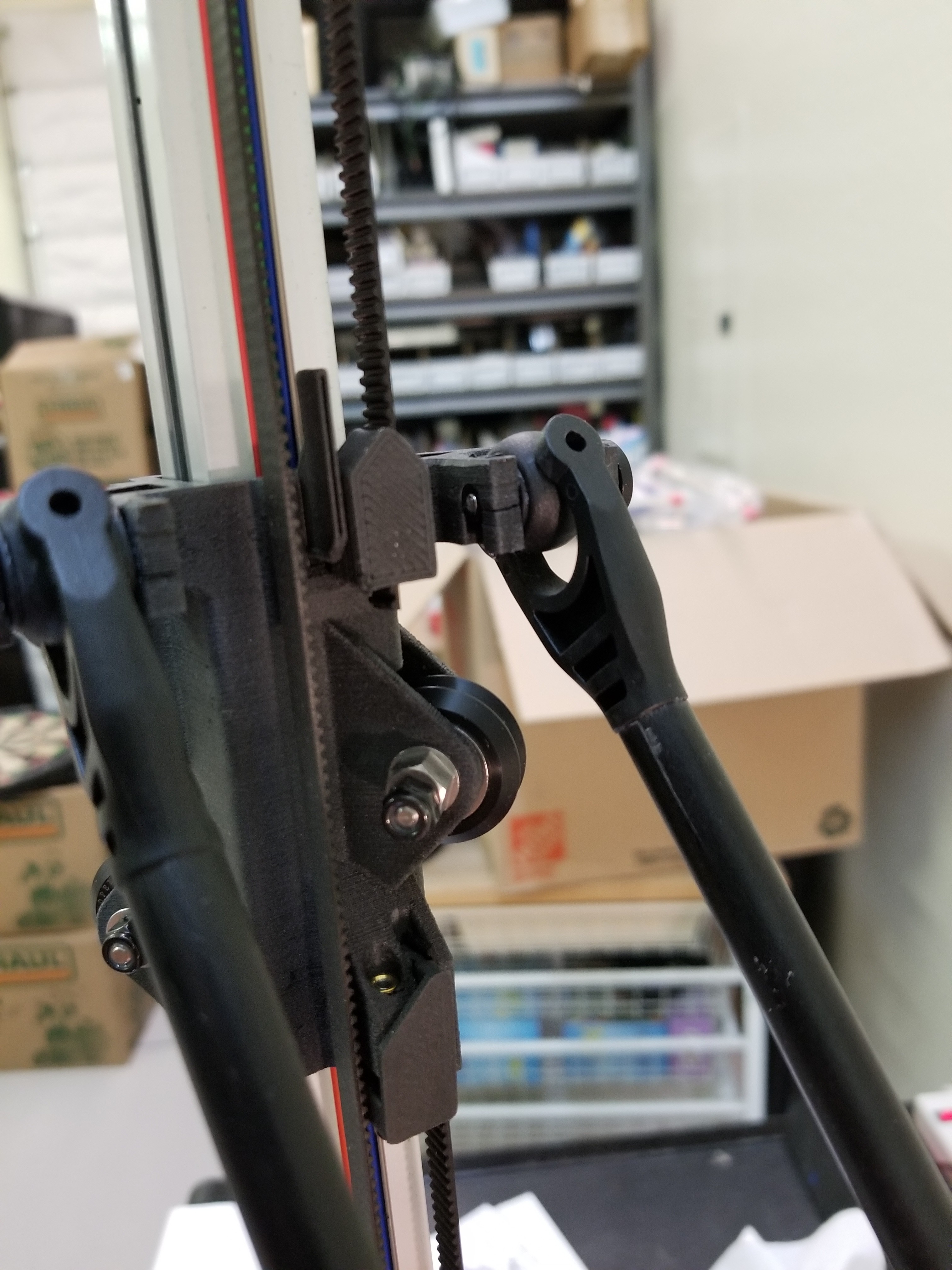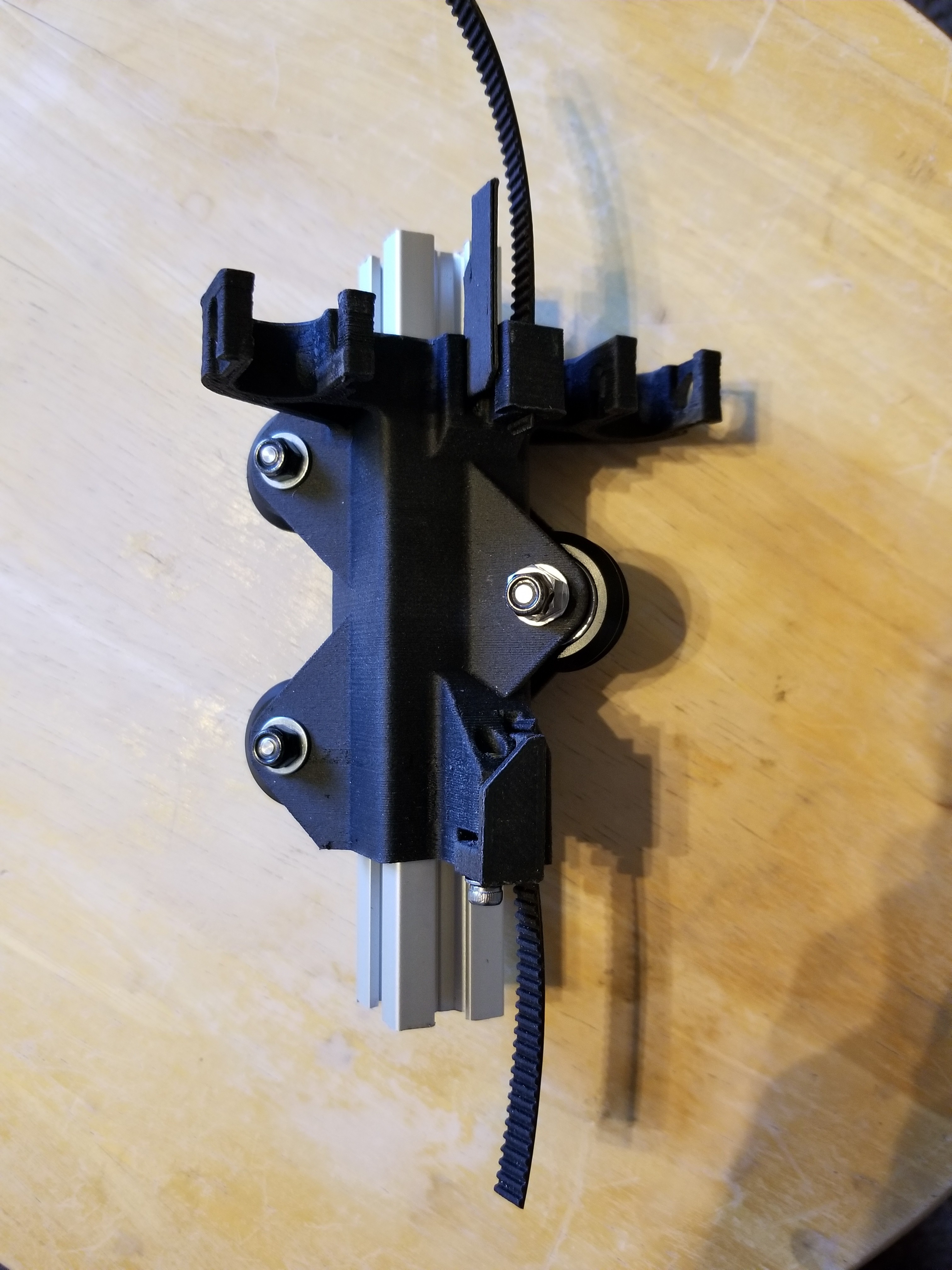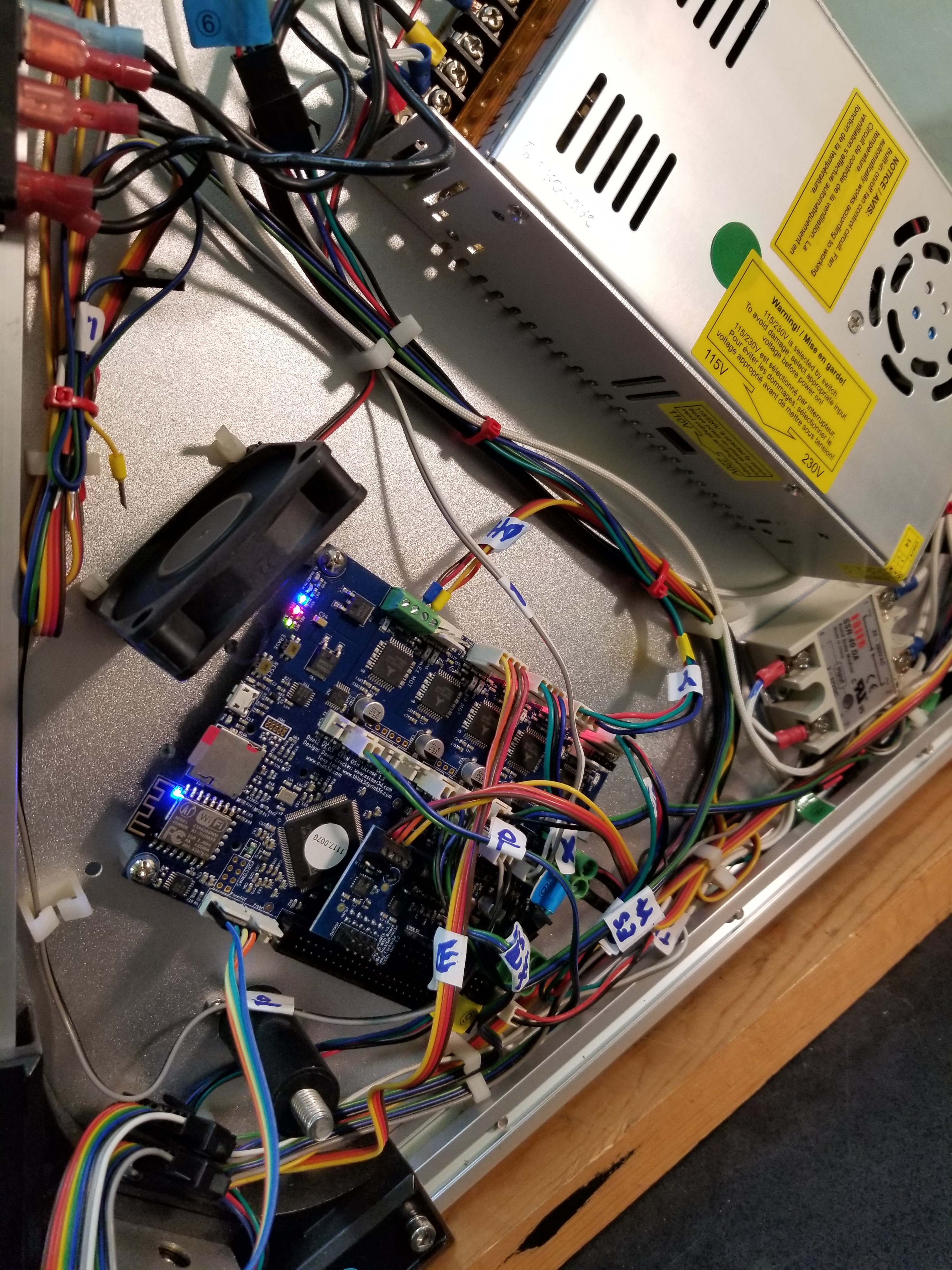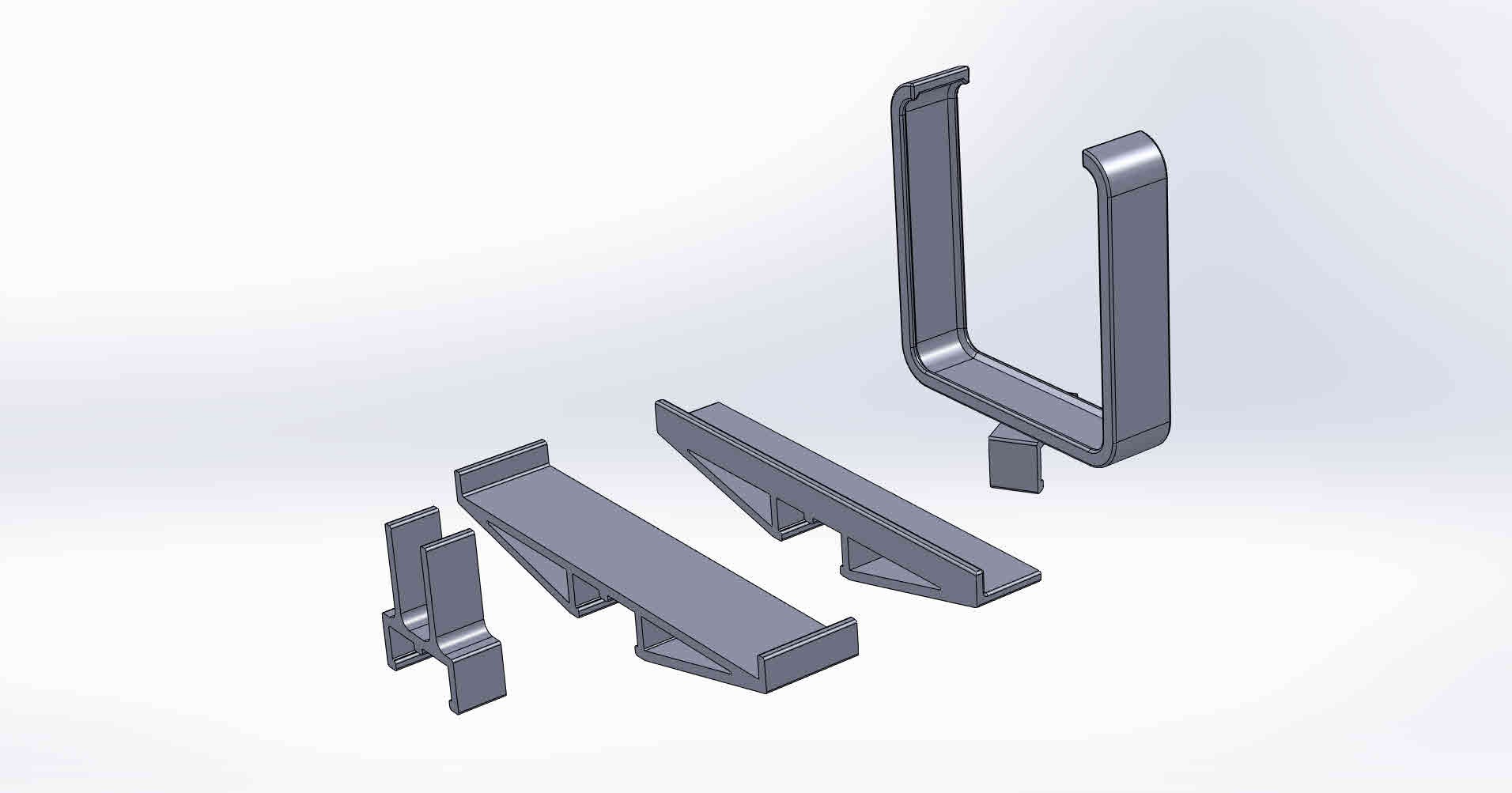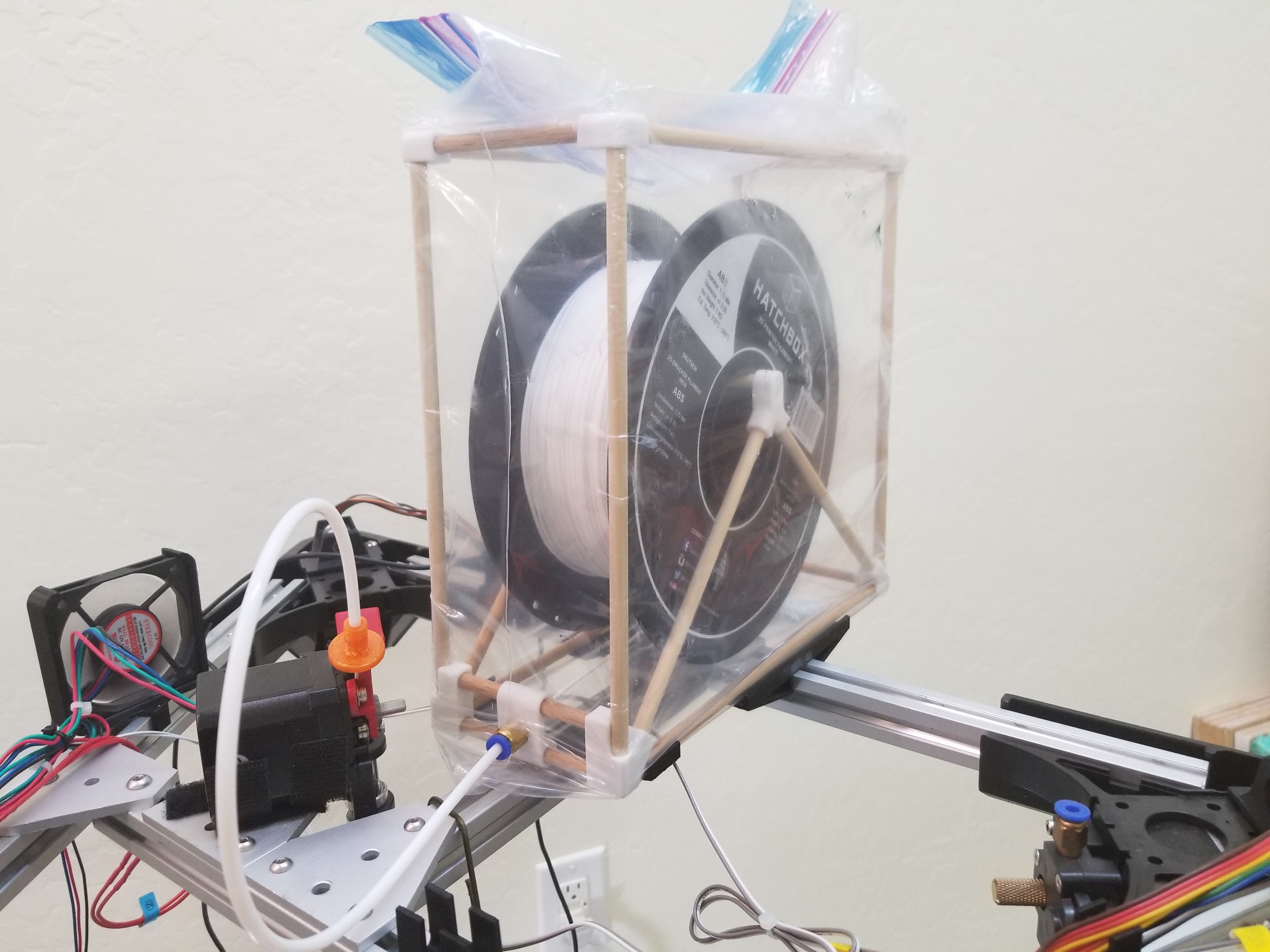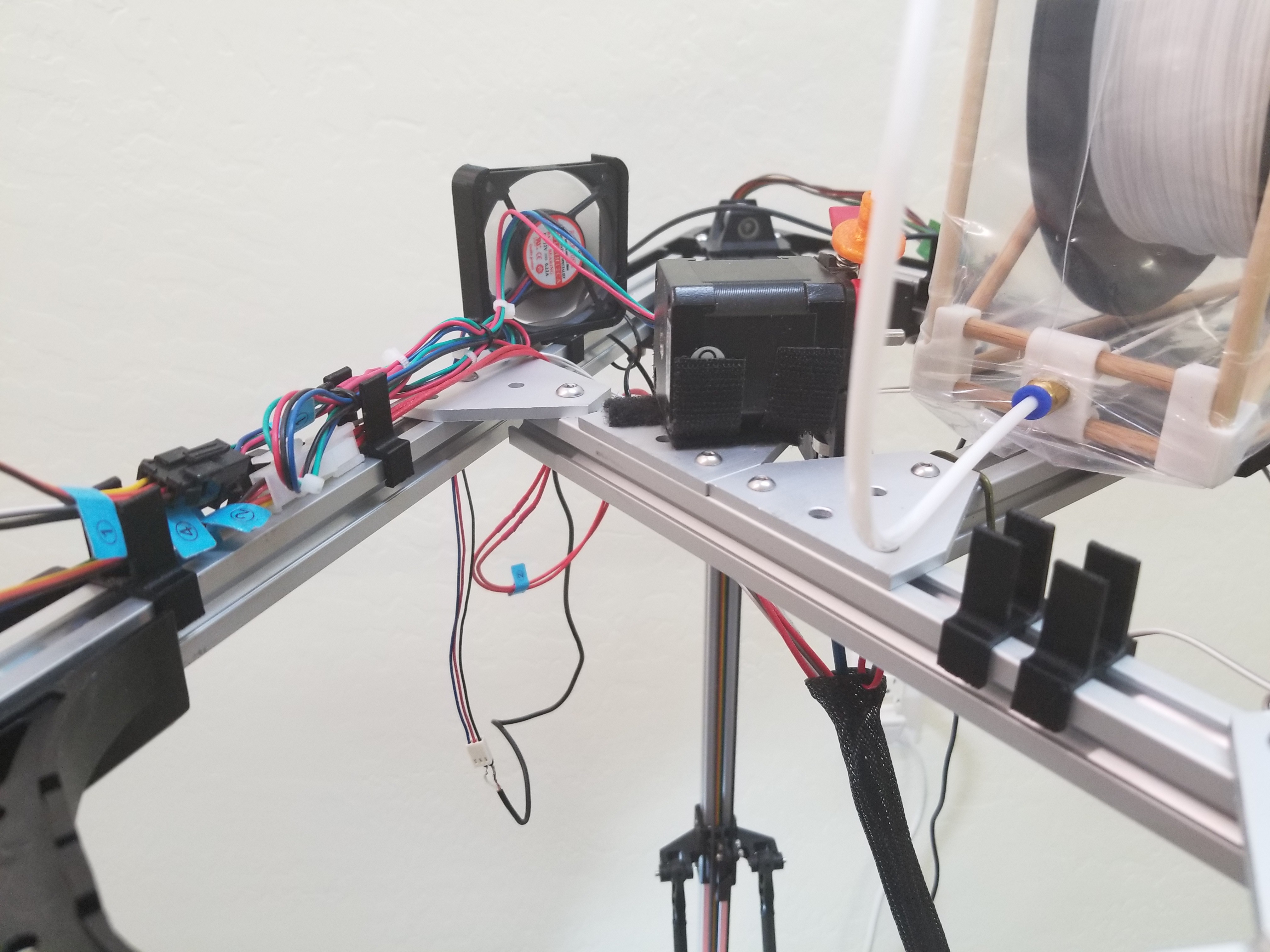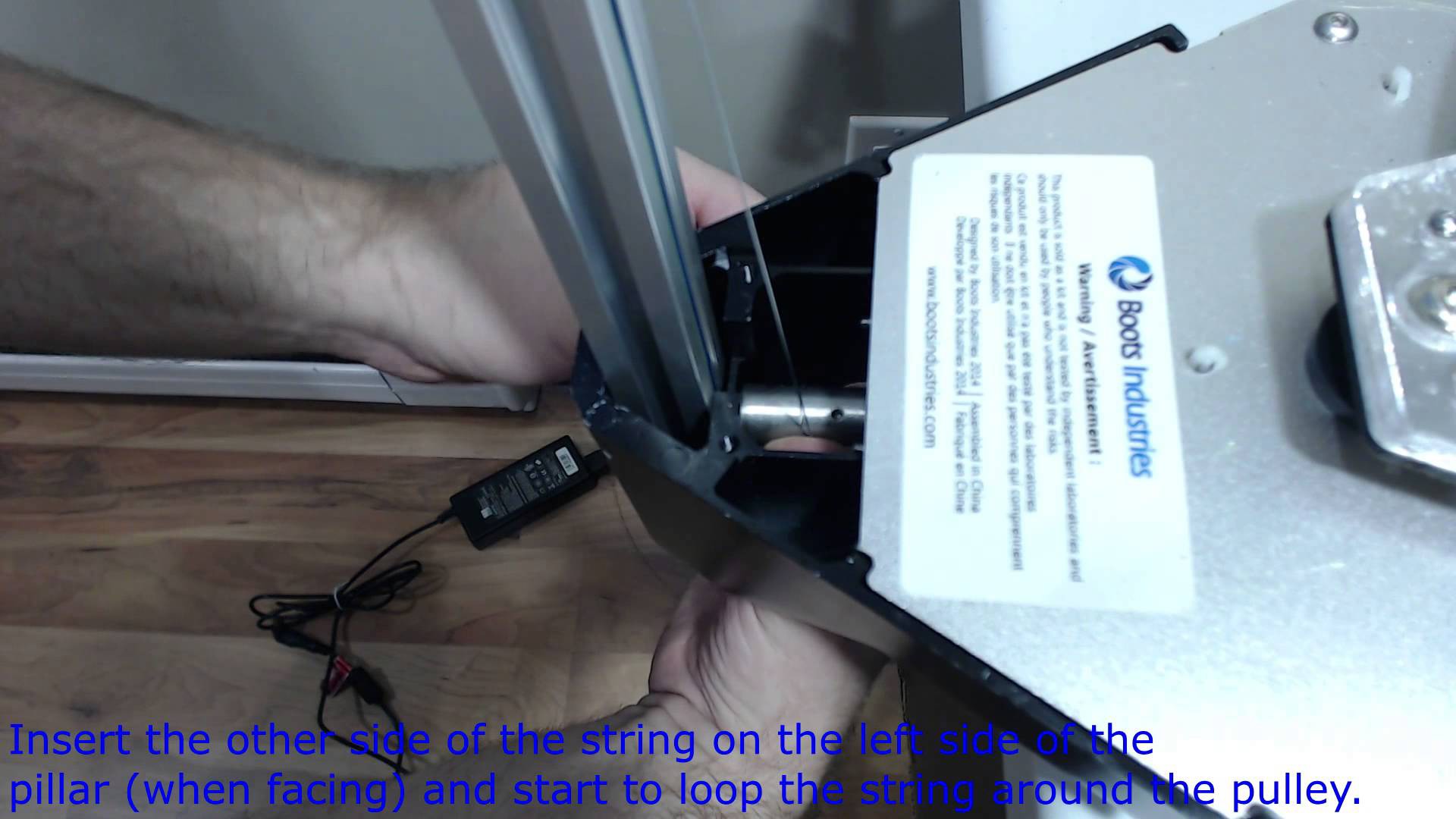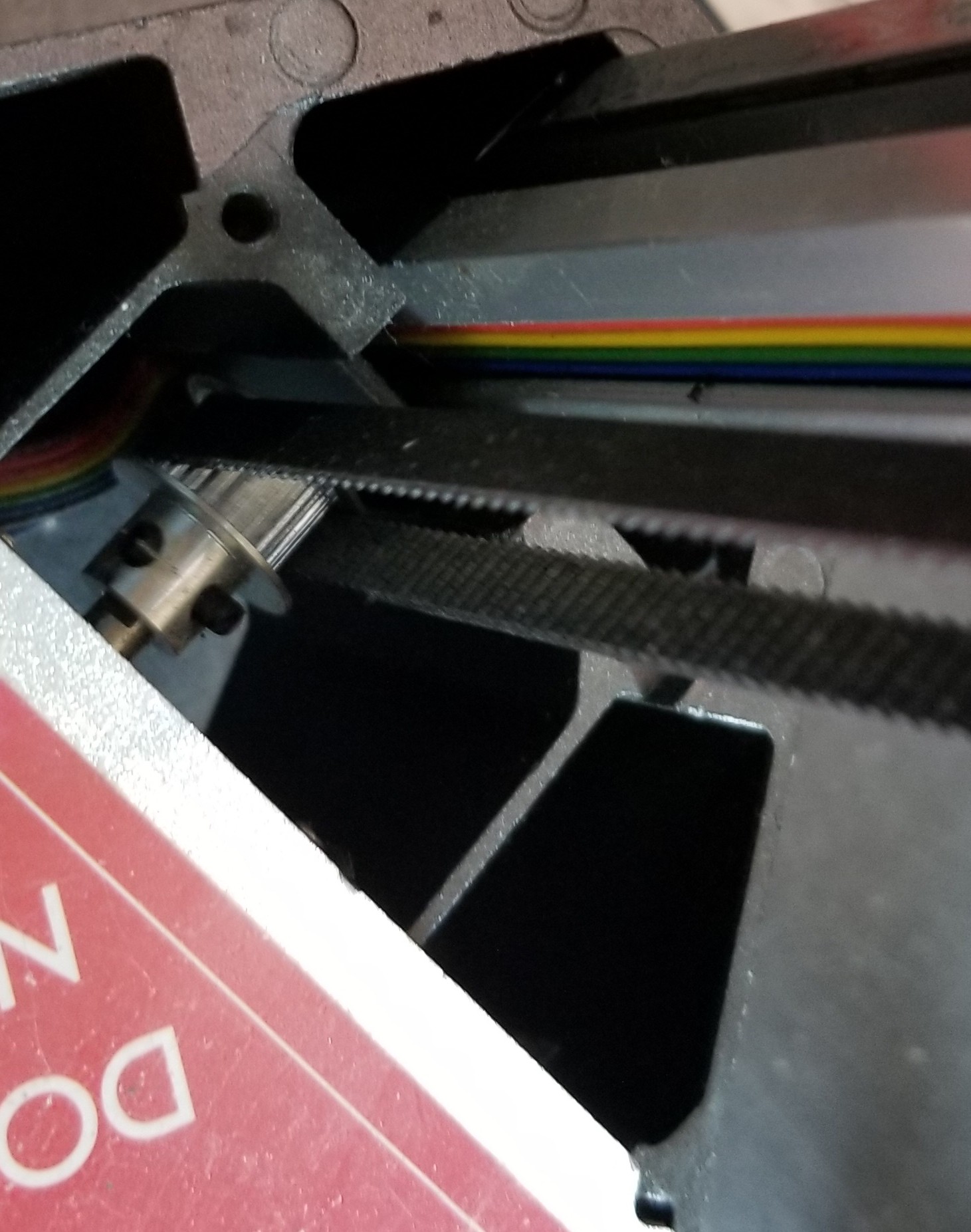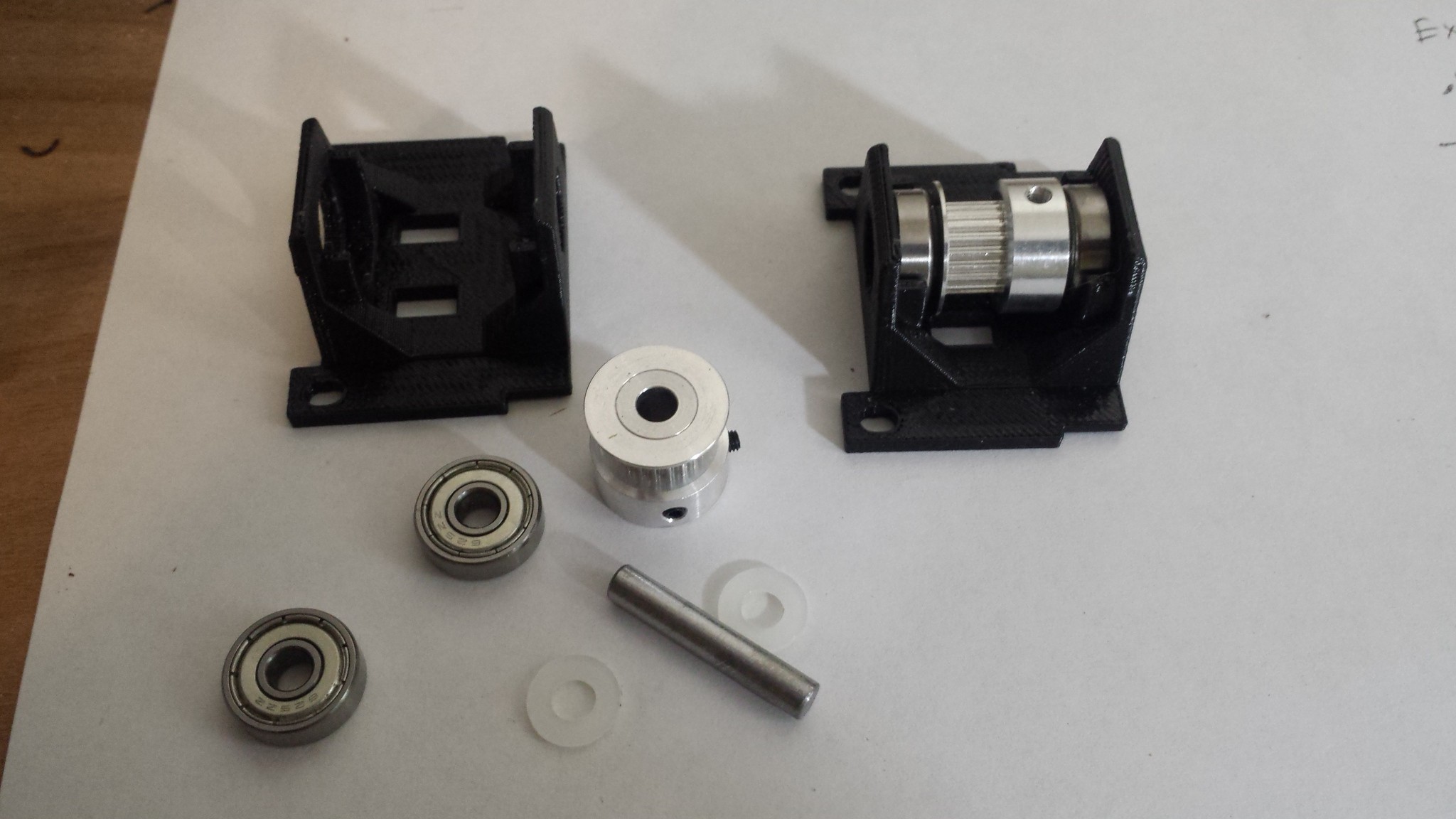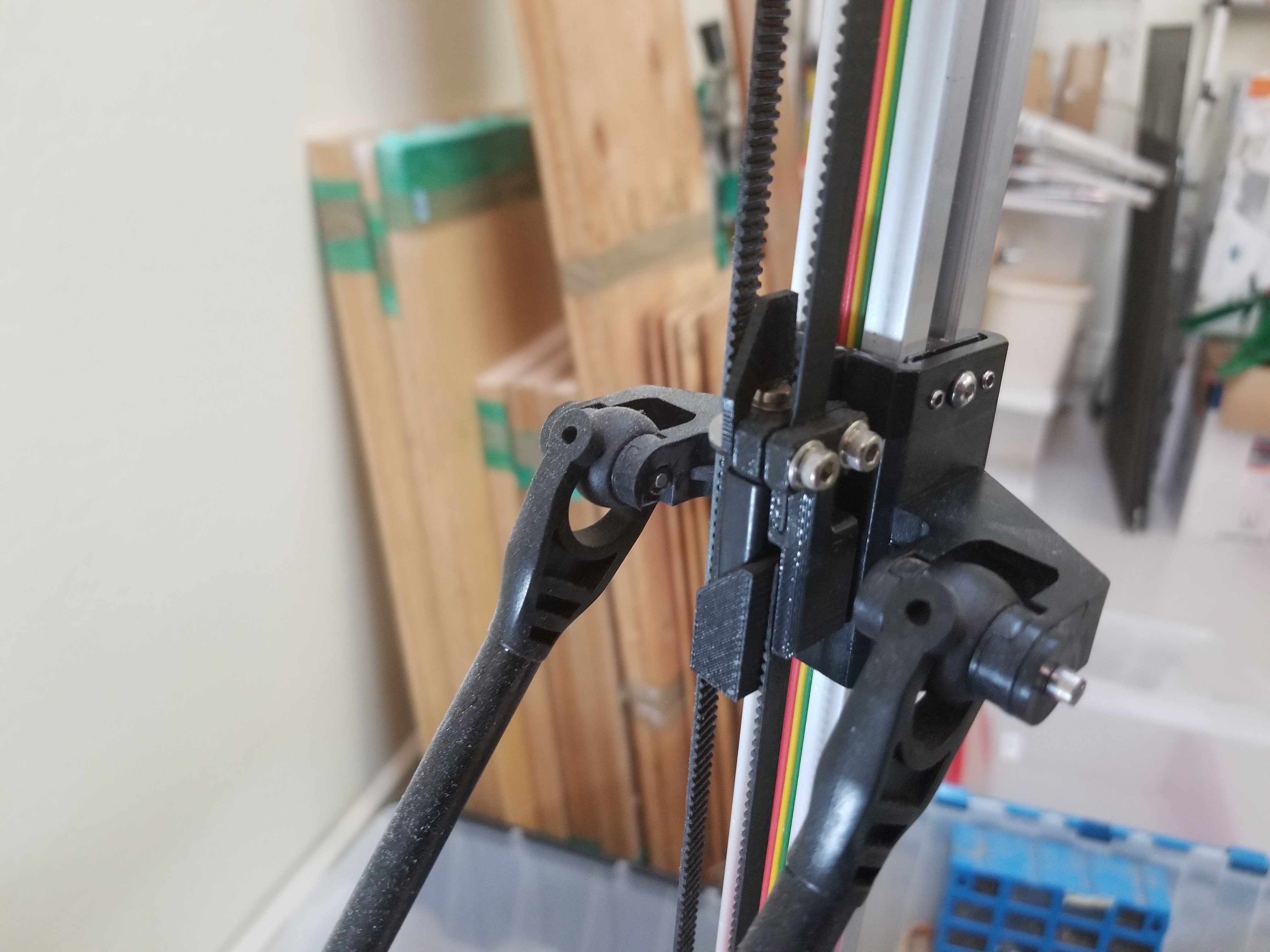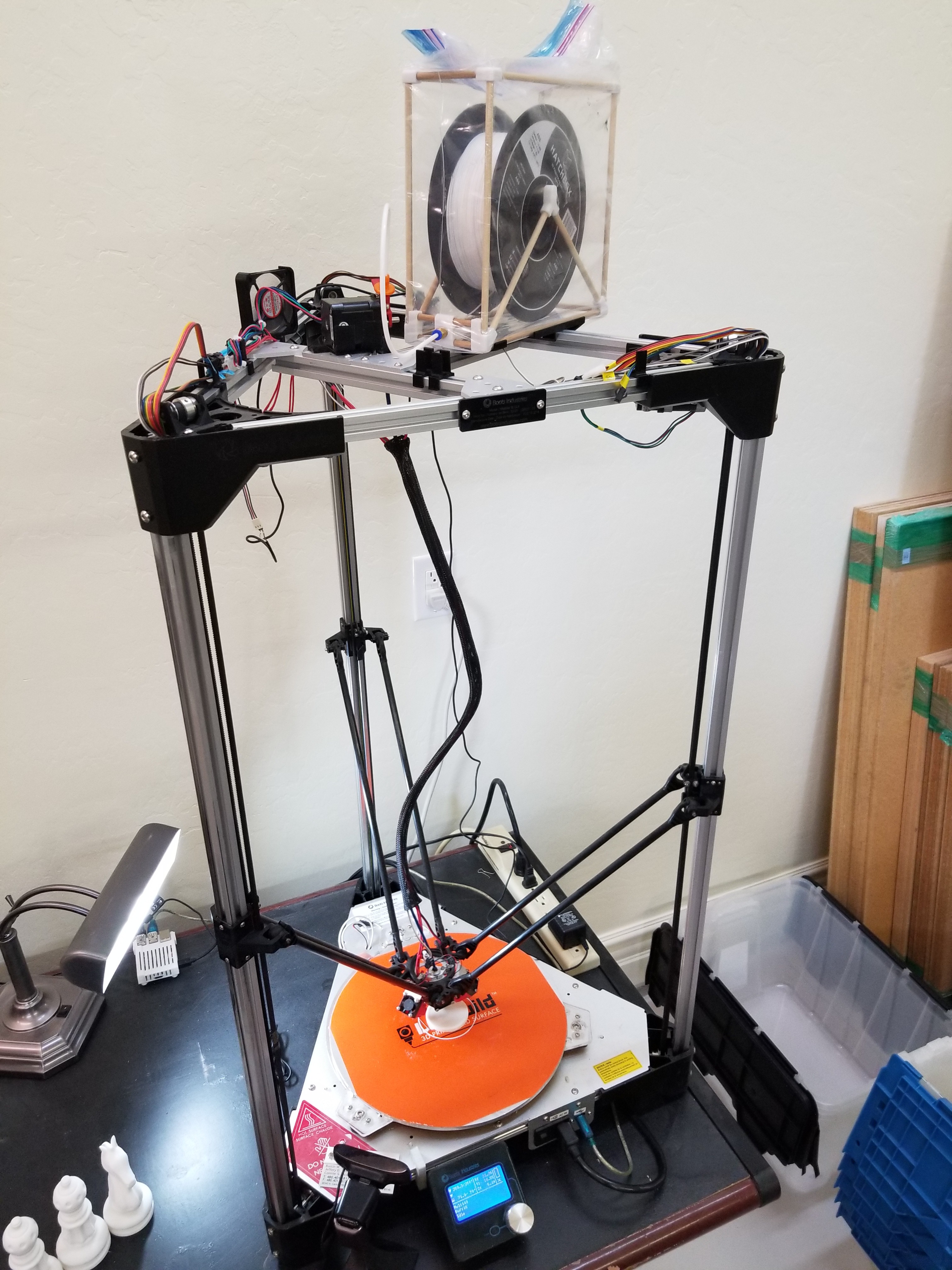-
Frankencarriage Install - FTF Edition
03/08/2018 at 02:28 • 0 commentsFTF = File To Fit. Yeah, V1.0 of everything seems to have problems. :)
Anyway, good news. The beast is up and running with the Frankencarriage install - after extensive fiddling and cracking and patching and filing.
Here are some pics:

This is the original carriage - note the lack of wheels or anything that won't eventually wear away the plating of the aluminum rail

Both types of carriage... and my foot.

To change out the carriages, you have to remove the head while carefully unthreading the cables that run through the corners.

Look Ma, no head!
After this it's relatively simple to tease the cables through the carriages.

First Frankencarriage in place, with the two-headed adjustment wrench. Little did I know the fun and games to come...

They look good! At least to me; it's been a fair bit of work to get this far. Still, lurking in the shadows are a couple of problems.

Look closely - the prototype fix for the first problem is the wart on top of the top belt clip - it's there to move the belt over a couple mm. Seems the designer put the belt holder in the <cough sputter> wrong place. Now what - I don't want to bodge any more of these up; just doing one was a real pain.

Luckily my old, tired and battered M3D printer was willing to come back to life - printed the hack in PLA.

The printer was sufficiently functional at this point that I printed a set of clips in the same material as the carriage.
Oh but the second problem, which had manifested as difficulty moving the end effector towards the edges of the build platform, became clear. Look at what's happened to the printed part of the carriage that holds the rod bearings - they're cracked! What happened? Turns out the prints have a habit of over-extruding, up to 0.2mm, which caused the inner radius of the arms that hold the rod bearings to shrink. The U-joint part of the arm was banging against this inner radius, which caused this cracking.
Turns out a soldering iron and filament make for a good patch; which I wound up doing several times. My soldering iron doesn't like me any more.
After patching, extensive use of a rattail file and many test fits resulted in free movement for all the arms. All is well.
Another trick was to squirt some teflon lube into a cup, and paint some on all the bearing surfaces that were exposed in the process. This has resulted in much smoother action.
-
Frankencarriage V1.0
03/04/2018 at 22:16 • 0 commentsAfter lots of fooling around getting the printed dimensions just so, here's the first real revision of the carriage replacement. The old ones have worn the plating off the 2020 rail in places - a really bad thing. :)
The flag might get shorter, if there's room in the chassis for the carriage to go higher.The print is in carbon fiber nylon, from 3DXTech. Only one nozzle clog so far... :)

-
Brain Surgery Pic
03/04/2018 at 22:10 • 0 commentsI had the printer tilted over, so here's a pic of the Duet WiFi with PT100 4-wire interface. Luckily there were was a convenient 4-pin connectorized portion of the ribbon cables going to the top end, so I was able to hack in the four wires cleanly all the way to the hot end. The wiring is a bit of a mess, due to length limitations from the original (RAMPS) controller.

Note the solid state relay is actually bolted to the case. :)
-
Brain Surgery - It's Alive!
02/15/2018 at 01:28 • 0 commentsOMG what a difference the Duet WiFi, after much re-connectoring and configuration, runs beautifully. Somehow though, in the middle of it all, the extruder numbers wound up at 200% of where they were before. Talk about a mess figuring that out. :) Adding the Panel Due makes for a really nice control interface right out of the box. The web server UI provided by the Duet is excellent, and does everything that Octoprint did, except for the webcam. It even makes manual machine calibration reasonably easy.
Anyway, after years of listening to the steppers whine and moan, the loudest thing is the fans. Plus, all those weird aliasing marks on the surface of my prints have disappeared - seems that having a more capable processor and local file storage has really helped a lot.
Also got sick of the original (plastic!) bed locators, which over time had really badly deformed due to the heated bed. Turns out a trio of hex standoffs, with one of those springs they use to hold together cheap picture frames does the trick very nicely. Looks a whole lot cleaner too.
Stoopid heated bed has developed a nasty hot spot over the last I don't know how long, to the point that it's scorching the heater's high temperature covering. Going straight to 90C bed temperature results in the scary 'where's that smoke coming from' situation. Until the replacement arrives a few weeks hence, I'll have to baby it by only raising the setting 10C at a time, resting, repeating until close enough to the target temperature that I can kick of a print.
Also, one of the axes is starting to leave black streaks on it's vertical rail - guess it's time to look into using rollers rather that a simple sliding contact. Sigh :)
-
Brain Surgery Time
01/29/2018 at 16:23 • 2 commentsOMG - I've been using Octoprint on a Pi for the longest time, and just lately figured out that the source of this 'globbing' problem on complex parts seems to be the communication link between the Pi and the Ramps controller board. On tight curves, the hot end would hesitate slightly - great genius that I am, it took me this long to get the idea that with a Bowden extruder that's likely to cause at least some level of glob. I sort of proved this by putting the same .gcode file on an SD card, and the resulting print looks noticeably smoother. This could also explain why some of the more delicate prints would get knocked over, as a collision between the hot end and the part is a bad thing.
I could probably live with using the SD card and the Ramps controller, but I've become very fond of the remote control aspect of Octoprint. So a Duet WiFi controller and associated Panel Due are on the way. Time for brain surgery. Apparently this is a fairly painless process, as others have done this retrofit successfully. The hot trick seems to be knowing to modify the resistors in the optical end stop boards in order to interface with the Duet properly.
-
Top End Bracketry
01/18/2018 at 05:02 • 0 commentsThis was a real repair mission, as the top deck had disintegrated. The extruder wants to live near the center of action, so that became a serious problem.
I solved this with some additional 2020 extrusion and adapter plates. I still needed to hold my spool holder in place, as well as the extruder cooling fan. As a bonus, I made some wire ways to keep things a bit less messy. The design looks like:
and the top end of the printer looks like:

and:

for the wire ways. Note that the extruder is just velcro'ed to the brackets, as it makes it a lot easier to fool with the filament path.
The spool holder is something I came up with that I call a Dessicase, as it keep the filament sealed and dry while it's in storage, and pretty darn dry in use because of the long PTFE tube and dessicant packs inside the bag. Note that the fittings are printed.
-
Belt Drive Conversion
01/18/2018 at 04:45 • 0 commentsThis was the most messed up thing on the printer - it started out looking like this:

and wound up looking like this:

at the base, and:

at the top, where the belt idler is. Note that the body is printed, with a pulley, skateboard bearings and central ground steel shaft. The belt is a pretty standard 6mm GT2. Here's an exploded view:

On the axis slider is a printed adapter that fits over the original wire termination:

Note that the top flag is for the optical Z-stop.
This made a huge difference to the reliability of the printer - at the time of this writing it's been running almost continuously for days churning out large chess pieces. :)
-
What the beast looks like today
01/18/2018 at 01:20 • 0 commentsHere's a pic of the machine as it stands today:

There are some upgrades and repairs - belt drive being the most important, then things like:
- 1/4" aluminum bed.
- Heavy duty bed heater.
- Buildtak style build surface.
- EZstruder extruder upgrade, with burly motor.
- After several tries, settled on the E3D V6 hot end.
- Designed and printed cooling nozzles for hot end fans.
- 2020 extrusion to replace cracked/destroyed acrylic top deck.
- Printed brackets to hold extruder cooling fan, wiring combs, and filament holder.
Details of the printed stuff will be in subsequent log files.
Boots V2.5 Printer Repairs and Upgrades
Making the Boots Industries V2.5 3D printer usable.
 Nyles
Nyles